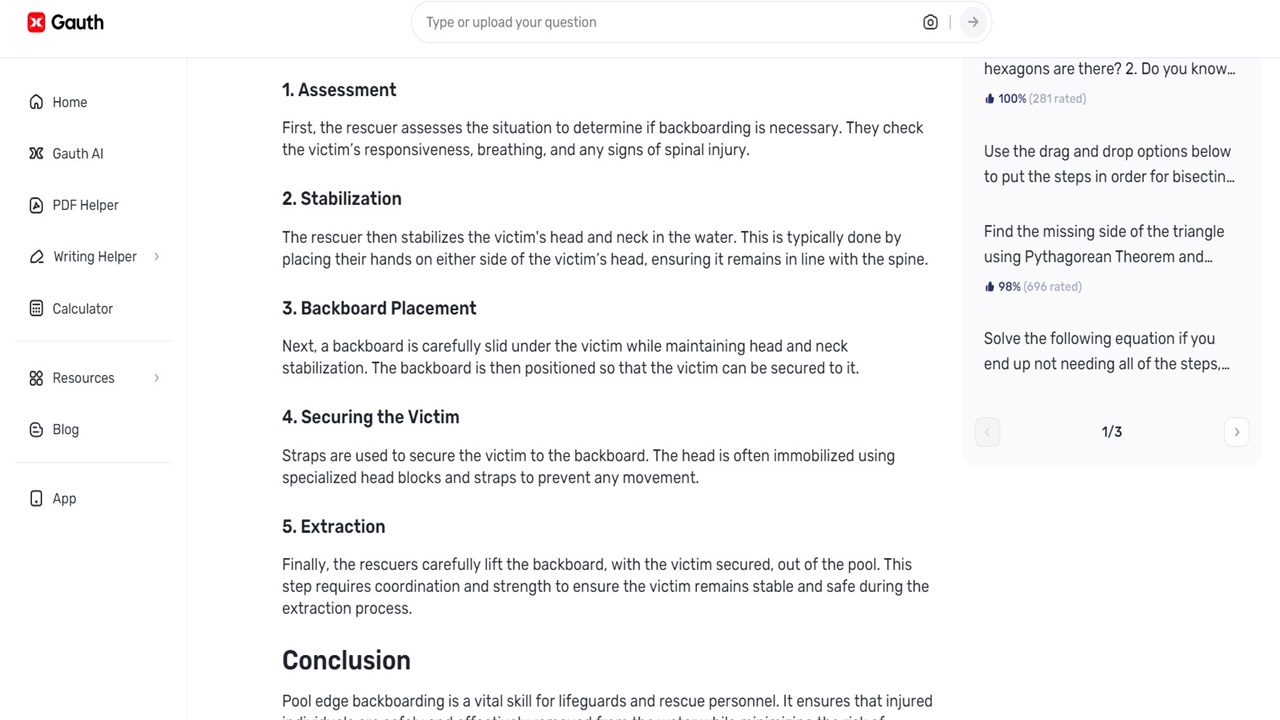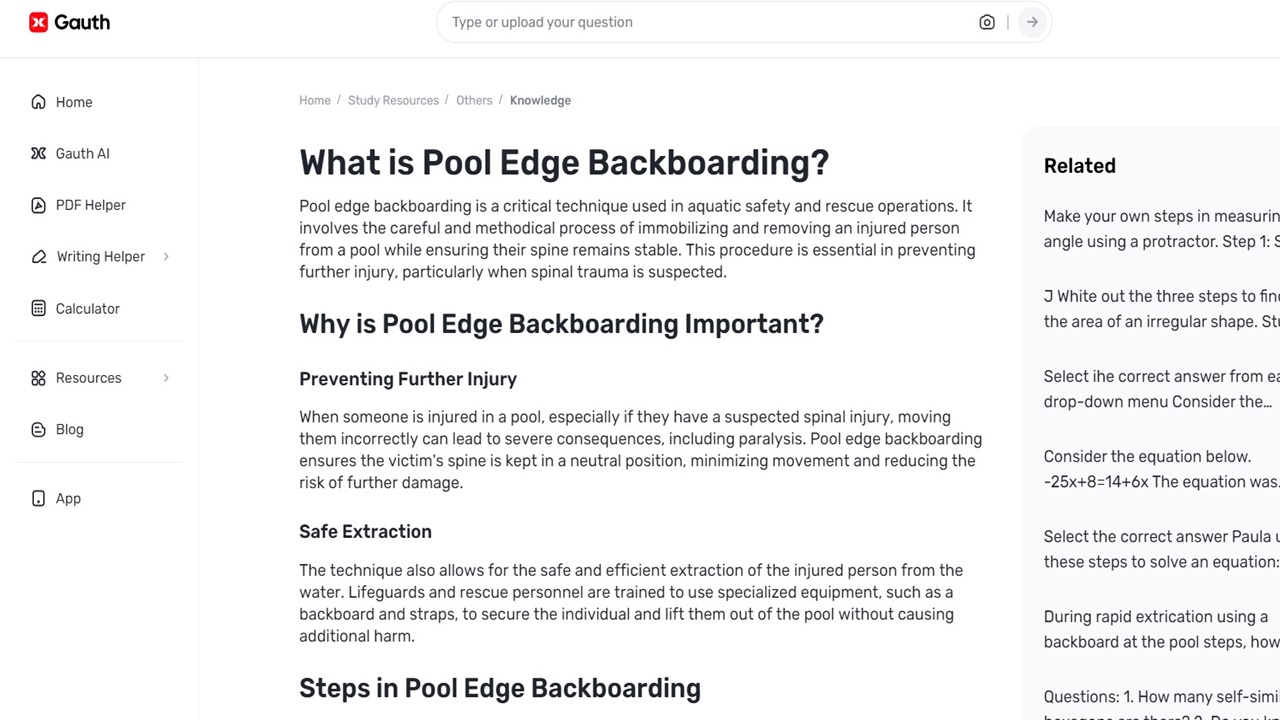Pool edge backboarding is a crucial technique in aquatic safety and rescue operations, designed to stabilize and safely remove injured individuals from a pool while protecting their spine. This procedure is essential in preventing further injury, particularly when spinal trauma is suspected. With the increasing need for precise and effective training, Gauth offers valuable assistance in understanding and mastering this technique. Gauth offers detailed guidance on pool edge backboarding steps, enhancing both training and execution of this critical technique. Here’s how Gauth enhances the comprehension and application of pool edge backboarding techniques.
Understanding Pool Edge Backboard
To give the reader an understanding of backboarding coupled with introducing the subject of how Gauth can improve backboarding, it is relevant to explain what pool edge backboarding means. This technique is used to secure and restrain patients who may have incurred spinal injuries, near or in a pool. Namely, someone’s life must be protected from additional harm and the victim must be removed from dangerous water swiftly and safely to a location where he or she could receive medical care.
Backboard implies positioning a hard board beneath the patient, buckling him or her in, and then rolling the patient over to a better location. This operation is not very simple, and any wrong step may worsen the condition of the affected part of the body.
The Role of Gauth
Gauth reflects a massive step forward in addressing these issues as a form of AI. By leveraging cutting-edge AI technology, Gauth enhances pool-edge backboard techniques in several key ways:
Simulated Training Environments
Thus, Gauth provides very authentic training simulations to address different pool edge situations. These simulations enable the trainees to engage in backboard exercises in a safe environment that does not endanger the lives of patients and medical personnel. The performance can be customized to various pool configurations, water conditions, as well as the number of patients, which provides the AI’s user with a wide range of practice scenarios that are hard to simulate in real life.
Real-time Feedback and Analysis
It is satisfying that Gauth can give real-time feedback as being a counterpart to a human. Backboard is a complex process that involves the use of various sensors and machine learning algorithms to provide real-time actionable insights on every aspect of the process. These assist trainees do rectifications on the areas identified that require improvement in their work to learn and notice when they are wrong and what actually ought to be done.
Performance Measurement and Evaluation
Gauth performance tracking also involves a record of trainees’ performance over time. These factors include the amount of time taken in the procedure, and precision of movements carried out, among other elements of safety. This data could be useful to different instructors who want to evaluate their students’ performance and introduce the necessary changes in training sessions.
Adaptive Learning Algorithms
Training is also engaging because Gauth’s adaptive learning algorithms change the intensity level of training based on the trainee. For instance, if the trainee were to master dealing with general themes, the AI can provide additional problem areas containing multiple facets. Incorporating the dynamic approach helps the training to be competitive and interesting to the hearts’ challengers while at the same time helping in improvement.
Future Prospects and Implications
The application of Gauth to pool edge backboard training is only the beginning of the extensive use of AI in learning. Subsequently, with further development in AI technology, simulation models will become more complex, feedback instruments will be more accurate, and in training and education, individuals will be able to learn even more efficiently.

Conclusion
Gauth is revolutionizing pool edge backboarding techniques to make teaching them and mastering them easier. The use of Gauth enables real-time training implying the simulation process together with a lot of other benefits which include the problems of learning as training issues. When it comes to the solutions to the mundane problems in training that traditional training has struggled to provide then Gauth is right in providing the ways how training can be improved. With further development of AI technology, the influence on training and safety will expand and foster the development of rescue activities in the water domain.


